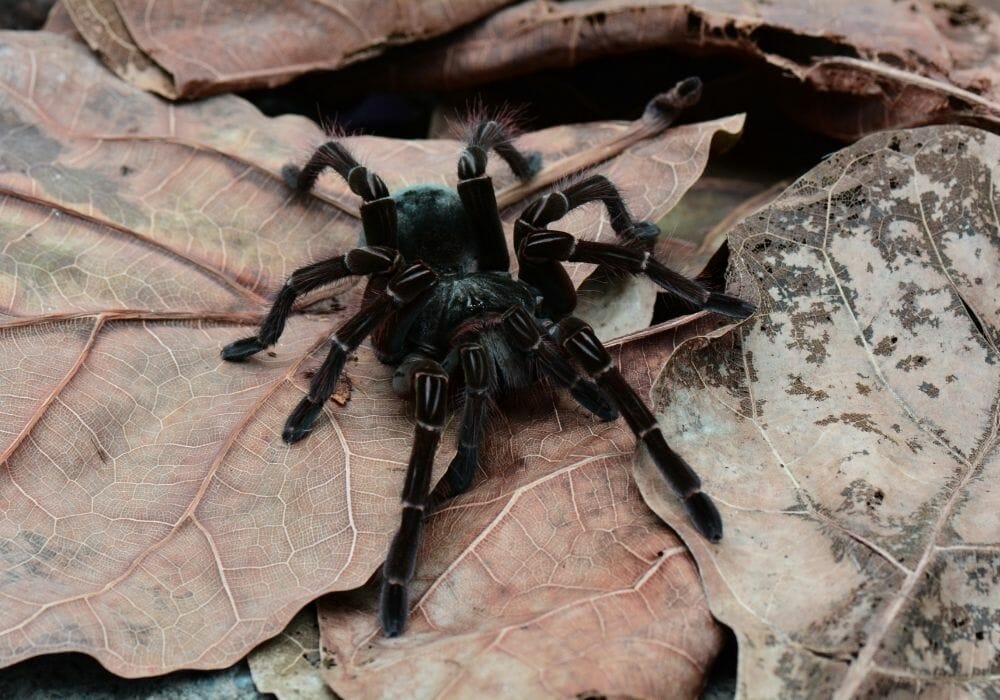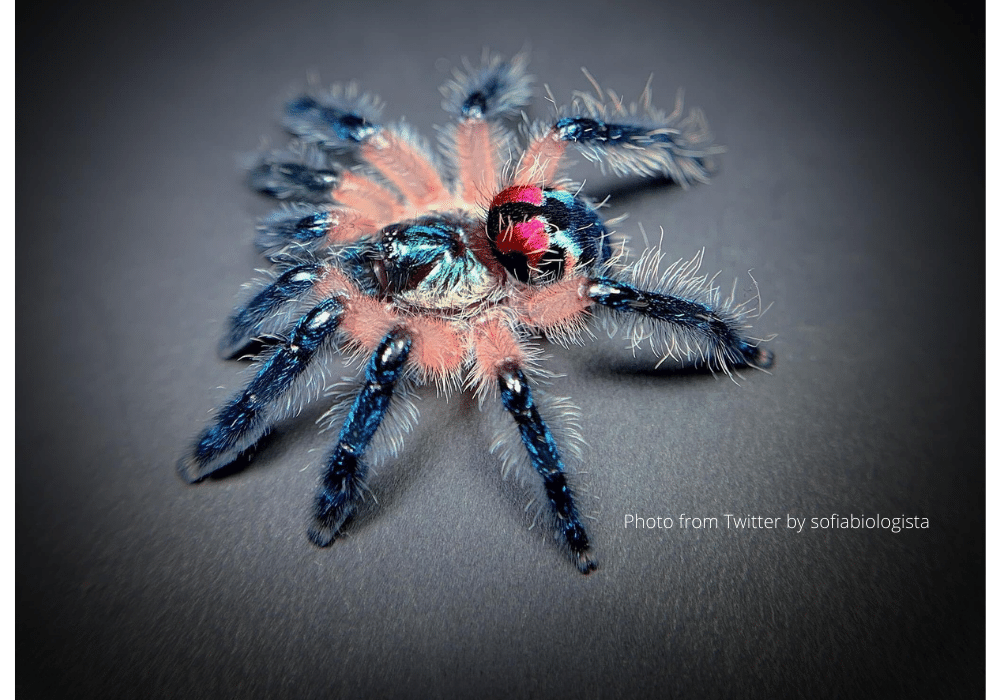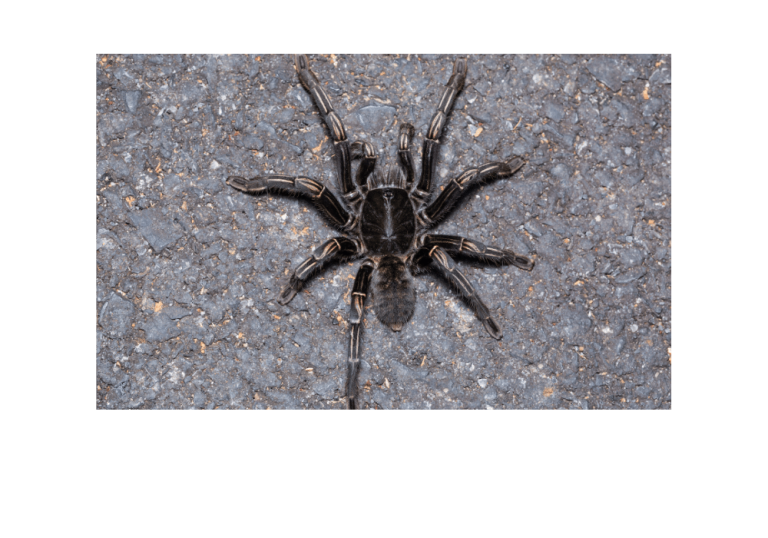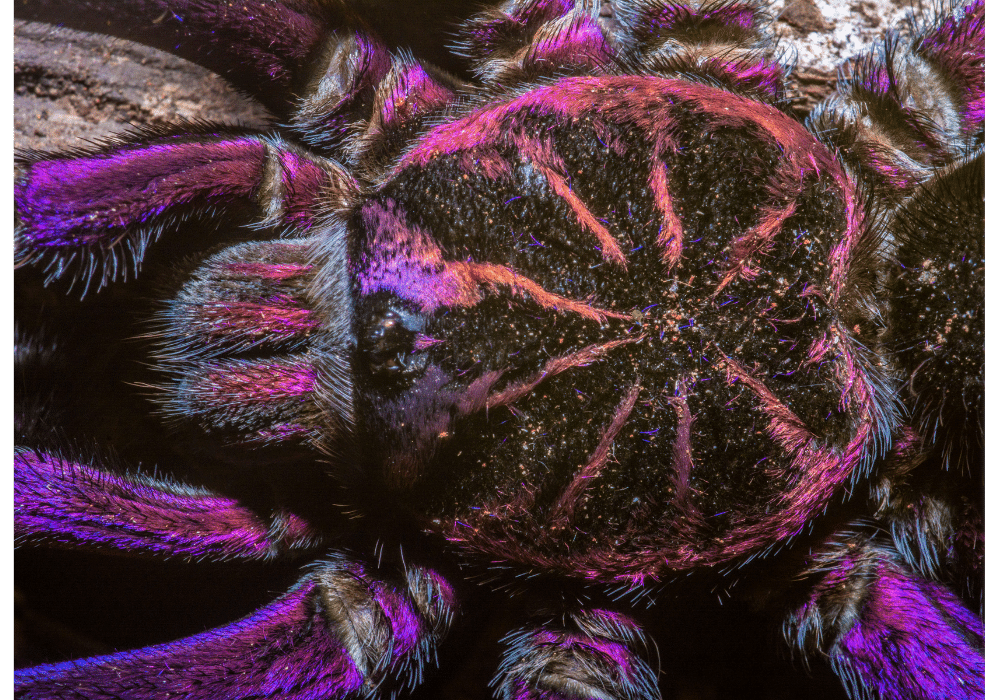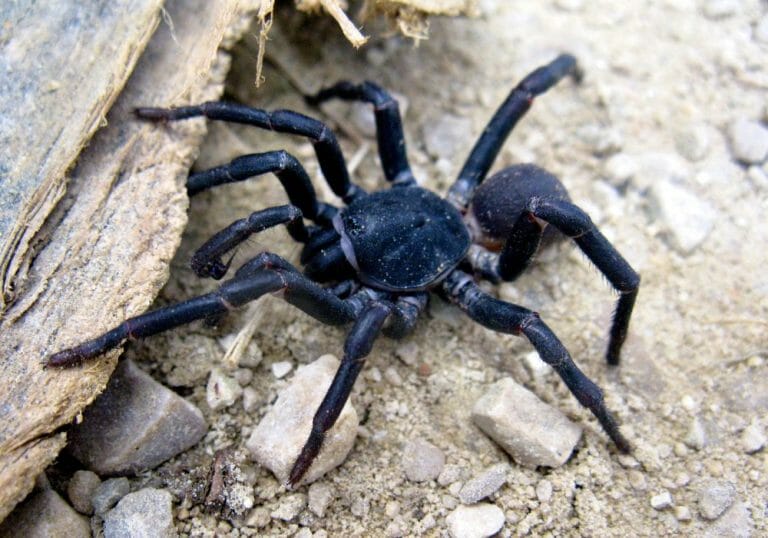Thailand Black Tarantula (Everything You Need To Know)
Scientific Name: Cyriopagopus minax
Common names: Thailand Black / Big Black / Thailand Big Black
The Thailand Black Tarantula is a burrowing, aggressive old-world tarantula. They prefer a relative humidity of 80% or higher. Their carapaces, abdomens, and legs are all jet black. They can be found in Southeast Asian woodlands. They hunt across woods, but they prefer to remain close to their burrow.
Appearance
The abdomen of a Thai black tarantula has a grey stripe before it molts. Males are smaller than females, weighing up to 42 grams. Their legs are lengthy and thick despite their relatively small size (approximately 5 inches (13 cm)).
They are entirely black & do not turn brown before molting. Such tarantulas molt up to six times during their first year from hatching. They usually lose once a year after that.
Habitat
Thai Black tarantulas burrow to approximately 60 centimeters (24 in). They use silk to construct burrows in the ground or behind the oldest tree bark.
They use silk as a tripwire around their lair to let the Thailand Black know if anything lurks around the corner. This silk is woven into tubes that allow tarantulas to detect vibrations and determine when prey is nearby.
Burrows of this type are abundant across Southeast Asia.
Behavior
They are a type of defensive spider. That is, they will avoid attacking someone unless provoked. However, they immediately return to their burrowing or hide in vegetation or loose soil if they are disturbed.
As a result, if this is not possible, they will rise and convey a clear signal to back off. Their front legs will be raised, and their fangs will be visible. Unfortunately, they often stay here until the threat is neutralized.
Longevity
Males have a significantly shorter lifetime than females, as almost all spiders do. Males often live less than three years and die soon after sexual maturity. On the other hand, females can easily survive for ten to twelve years.
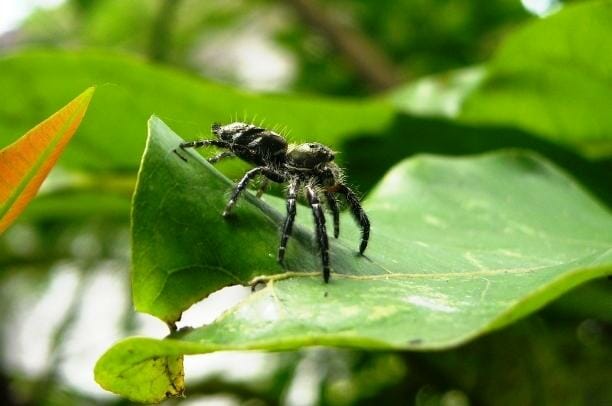
Diet and Feeding
These black tarantulas prefer places with an abundance of food sources. Their diet includes insects, birds, lizards, and reptiles. So they don’t hunt. Instead, at night, Thai black tarantulas lurk outside their burrow, waiting for prey to come their way.
Despite their eight eyes, tarantulas, like most spiders, have poor vision. They don’t see their prey, but they feel it.
They use silk to make burrows in the ground or behind ancient tree bark. This silk is fashioned into tubes that allow tarantulas to detect vibrations and determine when prey is nearby.
The vibrations become more significant as the prey approaches closer, signaling the tarantula to attack.
Mating
Male species mature between the ages of 1 and 2 years. Females begin to make theirs around the age of 3 to 4 years. The male will coax the female out of her burrow by vibrating it with his pedipalps. The mating activity begins as soon as she emerges. Males mate shortly after this molt and die quickly after that.
It takes to develop an egg sac is uncertain; however, it appears to be around two months. The sacs can hold forty to four hundred eggs.
Aggression
This species is speedy and will bite without hesitation. Additionally, this species will bite many times if aroused, and its venom is considered medically significant.
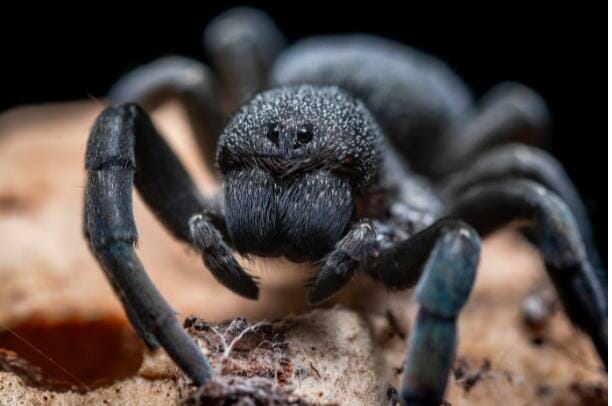
The spider will bite if the warning does not have the desired impact or the threat approaches.
Their venom is deadly to birds and small pets but not to humans. Unless the patient includes allergies, you won’t know it until it bites you. So that’s another reason to avoid getting too close to Thailand’s wild black tarantula.
As Household Pets
Tarantulas are popular pets. They usually only keep the much more docile and friendly new world tarantulas.
Thailand’s black tarantulas are ancient world spiders that are significantly more dangerous and aggressive than modern world spiders. To keep and care for Thai black tarantulas, only those with extensive experience should do so. They are not suited for children.
They prey on fruit flies and young crickets as spiderlings: an adult Dubia or Turkestan roach, adult cricket or locust, oversized mealworm, or super worm.
These are intended for advanced keepers only.
The Care Sheet
1. Enclosure – As adults, this species should be housed in a five or 8-gallon enclosure. Slings should be maintained in a pill bottle and progressed to a deli cup as they mature.
Sometimes tarantulas climb to the top of enclosures and get their tarsus trapped, potentially losing a leg. So, it is recommended to utilize squares without mesh tops.
High substrate levels are also required, as tarantulas can climb, and a fall from just a few inches can be lethal. In addition, as they make bottomless holes, this species necessitates a high level.
2. Requirements for Basic Enclosures – Fossorial configuration with at least four times the spider’s size in horizontal area, 15 cm to 20 cm deep substrate with a water dish to keep them happy. This setup is ideal.
3. Cage decoration – There is no need for cage decoration; A bit of burrow made of bark can be utilized if desired but not required.
4. Temperature – The ideal temperature range for this species is between 78° and 84°F.
Temperatures recommended: 24-26°C (summer), and 20-25°C (winter)
5. Lighting and heating – No heating or lighting is required for this species, as long as your home is kept between 75 and 85 degrees Fahrenheit. If the temperature in your home falls below that level, a small portable heater should be used to warm the room.
6. Humidity – Humidity should be maintained between 70% and 80%. Two times a week, you should moisten about half of the substrate. This will help keep the humidity level high enough. A small water dish can be used as a water bowl for an adult and a bottle cap for a younger specimen. Water should be readily available at all times.
7. Supplements – Tarantulas don’t require any additional supplements.
8. Breeding – Because this species is infrequently bred in captivity, most specimens available for purchase are field collected. To reproduce, you’ll need an adult male and an adult female. You must place the male in the female’s enclosure; if all goes well, he will use his tibial hooks to grasp the female’s fangs and deposit his sperm into her.
If you don’t separate them after mating, the female may try to consume the male. The female will create an egg sack if the breeding is successful. When the time comes, you will need to remove the female’s egg sack place it in an incubator, and after which you will need to cut the egg sack when it is ready. The slings must be separated and placed in separate containers.
Related Posts
- Brazilian Blue Tarantula (Everything You Need To Know)
- Thailand Black Tarantula (Everything You Need To Know)
- Thai Tiger Tarantula (Everything You Need To Know)
- Feather Leg Baboon Tarantula (Everything You Need To Know)
- Blue Baboon Tarantula (Everything You Need To Know)
- Trinidad Olive Tarantula – All Facts
- Purple Bloom Tarantula – All Facts
- Brazilian Jewel Tarantula – All Facts You Need To Know
- 17 Small White Dog Breeds – Facts and Temperament
- Mink Vs. Ferret – All You Need To Kno
